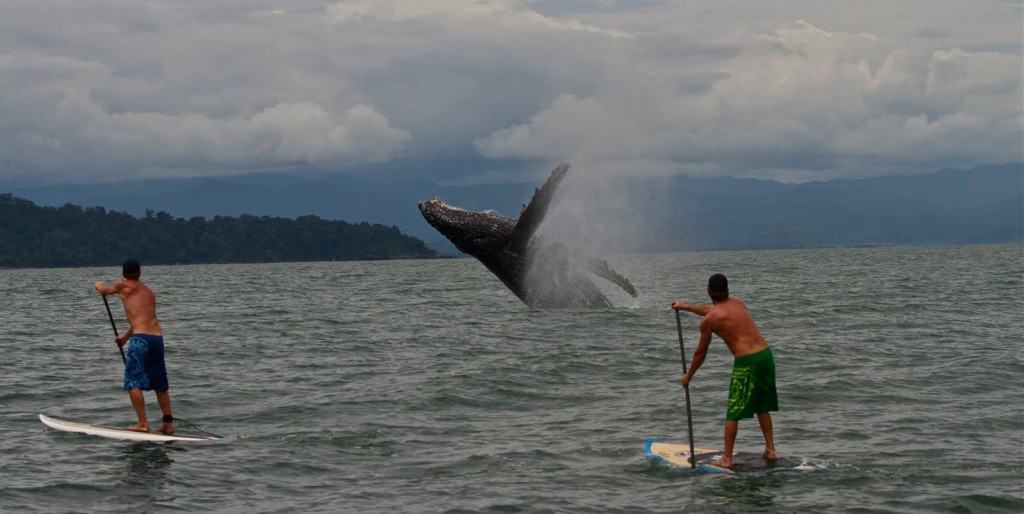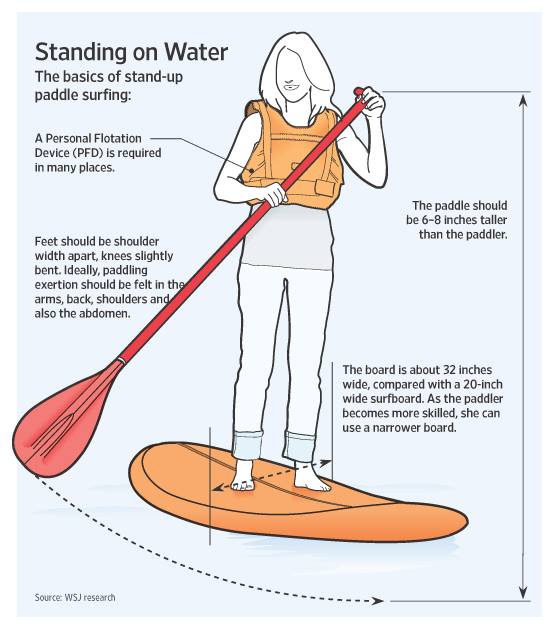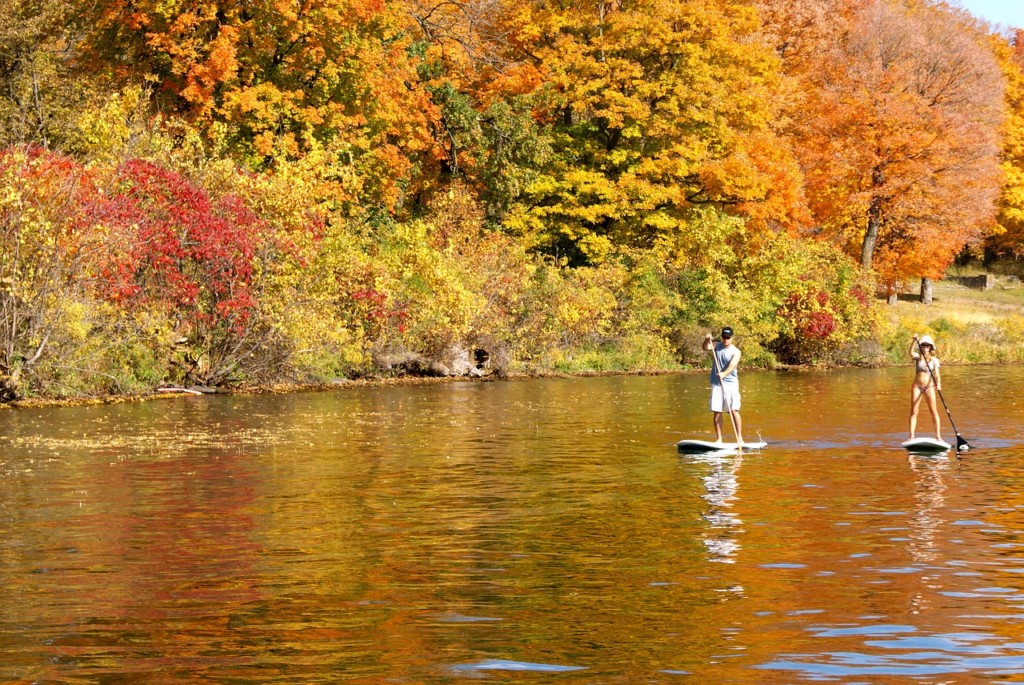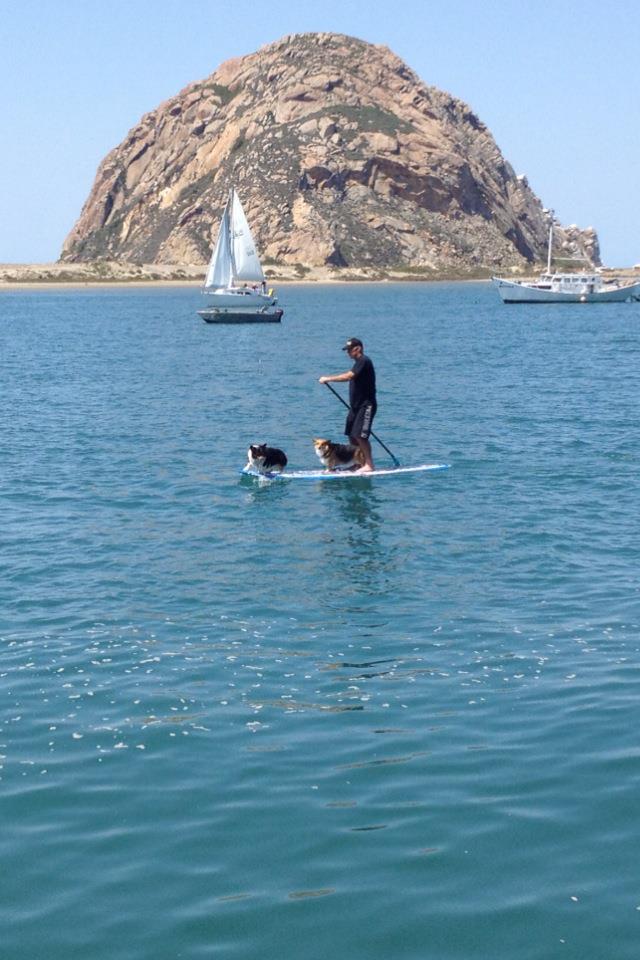With stand-up paddleboarding (SUP) booming, it was only a matter of time before a traditional surf sport started to make its way inland. Now, stand up paddleboards have made appearances in places where you’d have never expected them. From the Mississippi River to Lake Tahoe, there isn’t a place that holds water that’s off-limits for the ever-popular SUP crowd.
However, with the popularity of stand up paddleboarding, there comes increased risk. The more inexperienced paddlers you put into the water, the more inherent risk that it carries for those that enter these waters. Of course, everyone has to start somewhere to gain experience. If you’re a first-timer to stand-up paddleboarding, here are a few valuable safety lessons to keep in mind to protect yourself and others around you while on the water.

Recognizing the potential danger, such as other creatures in the water, is key to remaining safe on your board. Photo courtesy of Legends SUP
Know Your Ability Level
Understanding your limits, especially for first-time paddlers, is critical. Barreling down the Colorado River isn’t the same as the lesson that you took on Lake Tahoe last summer. All stand-up paddling isn’t created equal.
Knowing your ability level, and recognizing potential danger is key to remaining safe on your board. Start with calm waters and then work into the rapids, the shallows, and the rocks. You have to crawl before you walk.
Know The Limits Of Your Equipment
In addition to knowing your limits, you’ll need to consider the limits of your equipment as well. When I first walked into Legends SUP, a local shop specializing in SUP, the first question they asked me is how I wanted to use my board, since different boards cater to a variety of situations and applications.
There are inflatables, flat waterboards, SUP surfboards, race boards, boards made for women, those that carry gear, boards for more than one person, or even SUP boards made for those that use their board for yoga.
If you choose the incorrect board and use it without knowing the limitations, you could potentially be putting yourself into a dangerous situation.
Read More: Choosing A SUP: The Right Way

Knowing the basics of stand-up paddleboarding is a significant first step to being safe! Photo courtesy of Legends SUP.
Dress for the Conditions
The sun and the elements are a real danger to freshwater paddlers. If you’re going out, make sure to wear at least an SPF 15 (preferably an SPF 30) as the water has a mirror effect on the sun’s rays and leads to severe burns. Better yet, don a rash guard (a close-fitting athletic shirt that can be worn under your wetsuit) or a long sleeve shirt and a cap to protect your skin from dangerous UV rays.
The same holds for winter paddling or cold water paddling. While you might be an experienced paddler who rarely takes a dip in the water, it’s always advisable to wear a wet suit in water that’s colder than 65 degrees F (18 degrees C). Just a few minutes in cold water with freezing temperatures outside could cause you to become hypothermic, a serious problem with life-ending implications. Be safe and dress for the weather.

Make sure to dress appropriately while stand up paddleboarding. You could wear your swim gear or a rash guard if in rough waters. But always wear sunscreen! Photo: Pixabay / Standuppaddle
Understand and Use Safety Gear
You may have all the right clothing, but what about any needed safety gear? I’m not suggesting that you strap on a coat of armor and head off to your local lake. In fact, most flatwater requires nothing more than good sunscreen, your board, and a paddle.
However, some situations call for more gear and extra safety measures when stand-up paddleboarding. Riding rapids, floodwater, or taking long trips on your board might require you to pack some additional safety equipment such as a helmet or a personal floatation device. Although the board serves as a floatation device, it’s never a bad idea to wear a life jacket as well.
Another common thread in freshwater paddling is whether or not to use the leash to strap yourself to your paddleboard. Loose rope or straps have the potential to entangle on underwater trees or rocks, which has the potential to make the leash a safety hazard.
On the other side of the equation, without a leash, it’s not only possible but also probable to lose your board in fast-moving water, especially on rather swift currents.
So, if you must use a leash to keep your board, use a coiled leash with a quick release. The quick-release allows the release of the strap in emergencies, like being hung up on a branch or underwater debris.
Read More: River Safety: 4 Lessons From Swiftwater Rescue Training
Use the Buddy System
When possible, never paddle alone. Even the most experienced paddler runs into underwater debris from time to time. A simple slip and a knock to the head is a recipe for disaster that could easily be avoided if you were paddling with a partner.
Read More: Doing The Dog Paddle: Tips For Canoeing & Kayaking With Dogs
Go Out & Stand-Up Paddleboard Safely!
Stand up paddleboarding is remarkably safe, and the chances for severe injury or death is decidedly low. That said, it could never hurt to brush up on a few safety guidelines before heading out for a day of fun on the water. Stay safe out there.
What recommendations do you have related to safety while stand up paddleboarding? Let us know in the comments below!
Read Next:
First-Timer’s Guide To Stand Up Paddleboarding
WasSUP, Banff: An Interview For Mountain Stand Up Paddleboarders
Wildlife Encounters On The Water
Article originally published August 28, 2014, with content by Legends SUP. Editor updated links and formatting May 12, 2020.


Thanks for sharing these great tips. As I am getting ready to start enjoying the idea of Stand Up Paddling, I am glad I have something like this to reference.